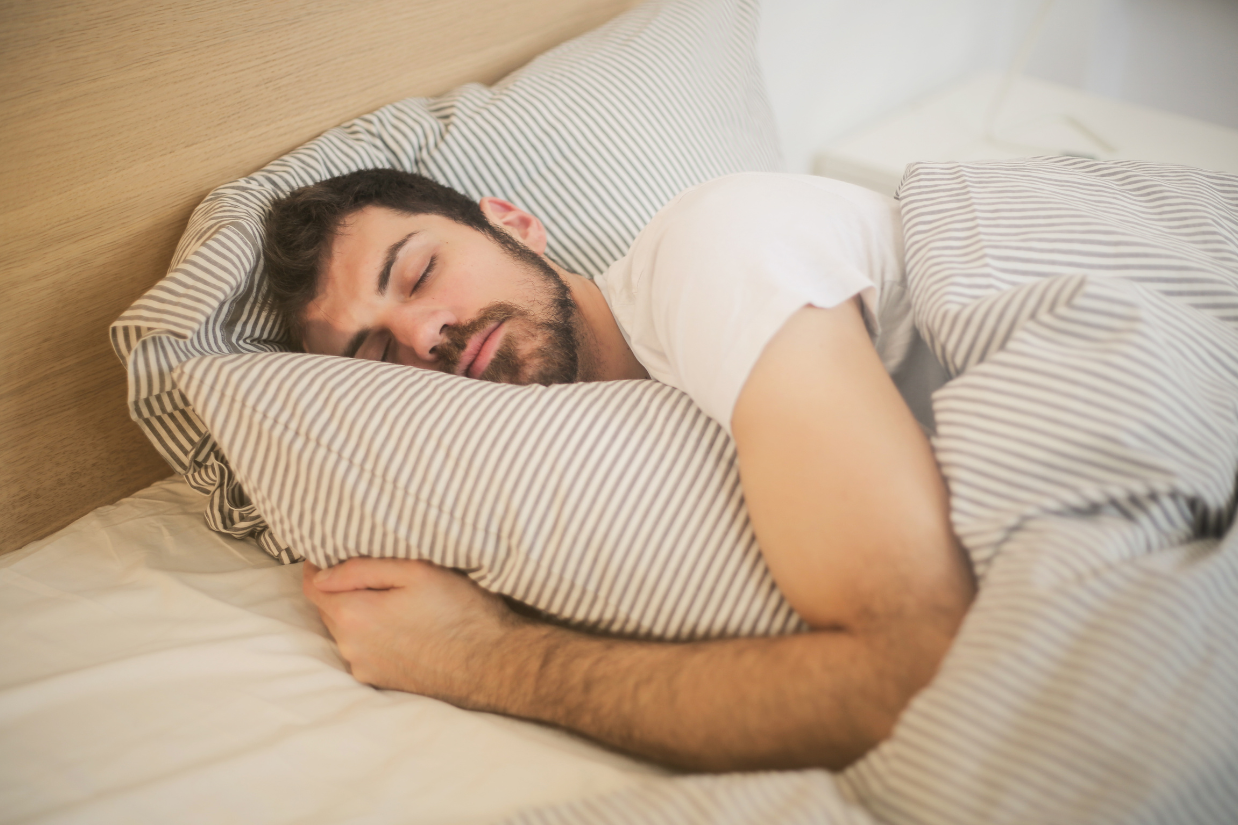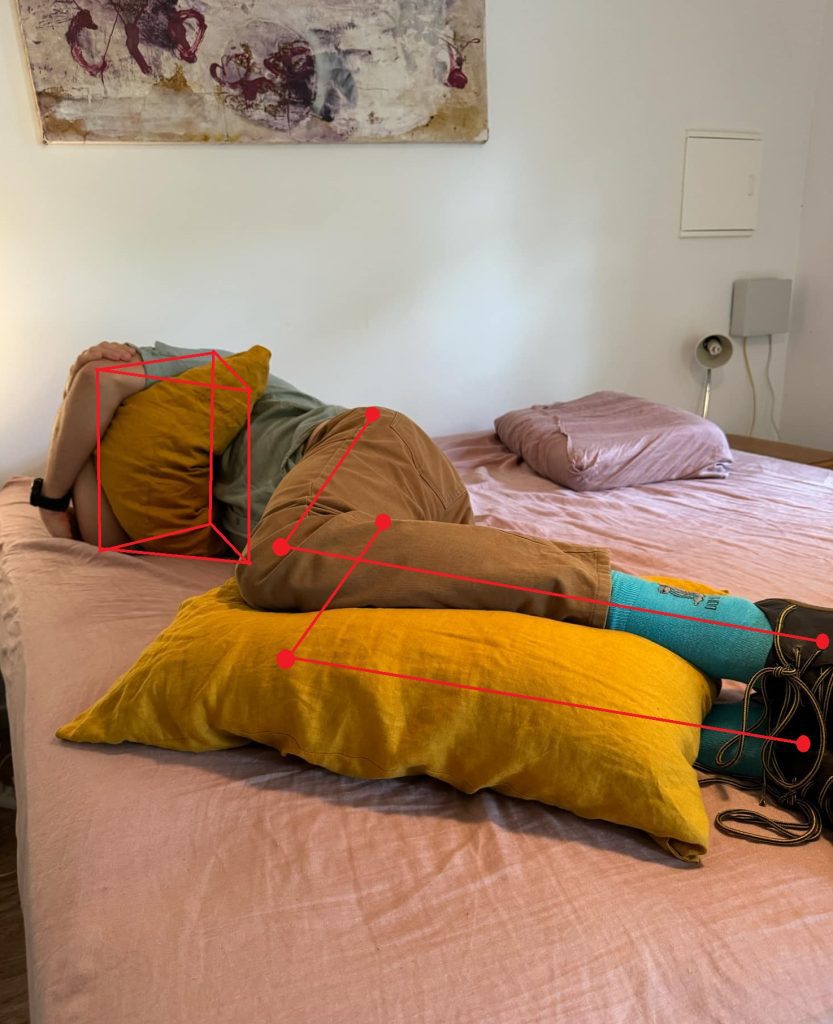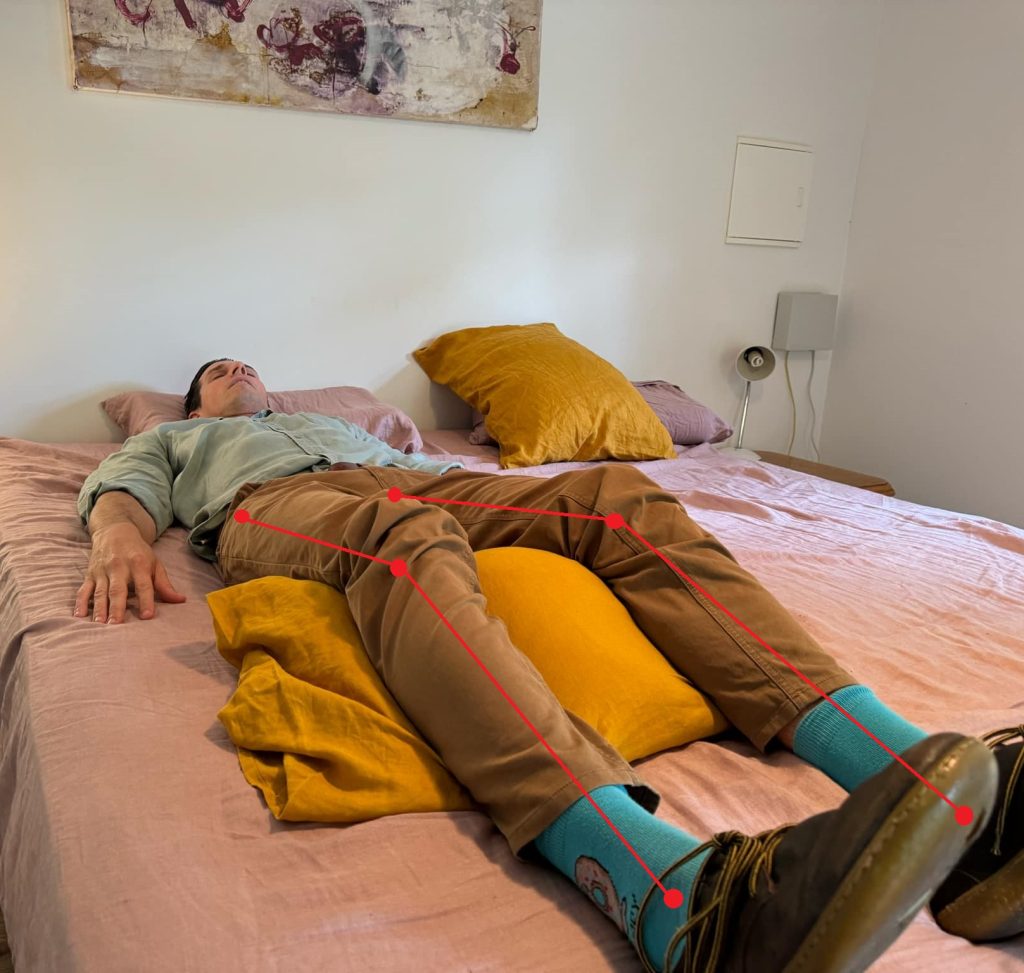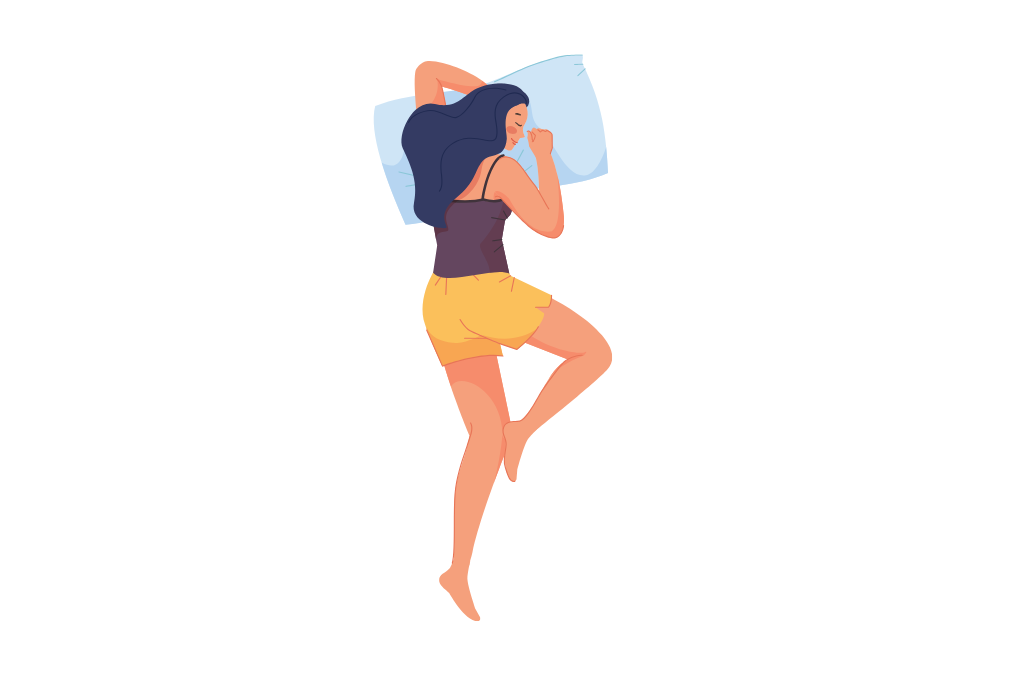Ph: (07) 5238 4000 | Email: info@osteophi.com.au

Stay alert and read this blog about sleep ergonomics to learn about the forces applied to your body while awake and asleep. I detail specific ergonomic sleep positions and what they can be good for. I elaborate on how useful sleep equipment such as beds and pillows. This blog can help you think deeper about how you may or may not be ergonomically snoozing. It can also help you dream up solutions that you maybe unconscious about!
The forces applied:
We lie down to take a load off. A load off our mind, a load off our joints, a load off our intervertebral discs, a load off our organ systems, etc, etc. When vertical and moving, the forces of gravity acting on our body are; downwards, upwards, forward and backwards, rotational and lateral shear forces. Getting horizontal changes how gravity loads our body, including; our joints, muscles, ligaments, nerves, even organs.
Our nervous system is always comparing what we have just felt to what we are now feeling. So, because of this, laying down generally gives us a relieving sensation. A moment of de-loading one might say. After feeling this de-loading moment, it can be easily overlooked that gravity is constant.
Yes, you heard it right folks, gravity on our body when sleeping is hiding in plain sight. We feel like weight has been taken off us when we lay down to sleep, however gravity is still there doing its thing and compressing us downwards into the bed. Because sleeping is a game of hours, time is the medium in which we sleep. How we present our body against gravity, on what surface, with what health issues we have, will determine how comfortable we are for how long.
I believe it’s best not to irritate tissues in the short and long term and the concept of a ‘neutral joint’ can help guide. We should aim to spread the load across many joints and when resting ideally, they should be left in a neutral position rather than an extreme end of range of motion.
Alignment and the neutral joint:
The definition of alignment is ‘arrangement in a straight line or in correct relative positions.’ When the body is referred to as being ‘in alignment’ this suggests that many joints are left in their most natural resting position. This, generally, is a de-compressed state for the joint and is the position when least forces are going through them. It is normally the middle point of the range of motion of a joint, therefore the description ‘neutral joint position’ kind of makes sense.
It has been suggested to keep your ears, shoulders and hips aligned to achieve optimal body position or alignment during sleep. This is to prevent a twisting, shear or compressive force to any one joint, or your body in any sleep position. It’s important to utilise the concepts of body and joint alignment, and neutral joints when sleeping. Although you can have good joint alignment and neutral joint position, it’s still important to listen to your feelings and move around to minimise overloading any specific joints. Mantras like, ‘moderation is key’ and ‘variety is the spice of life’ come to mind.
Sleeping positions – what is best?
Side sleeping: Foetal recall
I see side sleeping as a return to the womb. It replicates the position we unfurled from as we developed from an embryo into a foetus. It makes sense to replicate a position we developed from such an early age when we are in sleep mode. Not only is this a sentimental return our early stages it also benefits our energy expenditure and efficiency. How? Our body can more easily thermoregulate because:

How to cut shapes while you are sleeping
Laying on your side tends to load mostly through your shoulders, spine and hips. If you line up your shoulders and hips and support your body with pillows, it can optimise your alignment and reduce irritation. Without getting too sciencey, this shape that your arms and shoulder creates is a triangular prism – this is a very solid shape. Other reasons to side sleep may be to prevent snoring, reflux/heartburn and prevent back pain however, side sleeping may contribute to hip or shoulder neck pain.
Back sleeping: corpse pose
Now for some this position is a little confronting. It is, after all, the position that we put deceased people in. people sometimes find it harder to get comfortable in this position. And I understand why people might feel this way. When we lay on our back gravity loads us in a very unique way. It is literally stretching us open. The folding-in, C-curve that we developed as a foetus is now literally being pulled in the opposite direction – yes gravity is opening you.
This is a sensation to get used to, but with training and persistence it can be very rewarding. This position is good for most joints of the body as they are in neutral.
Of all sleeping postures, back sleeping enables the whole body to access the most symmetrical position. You may have guessed that it is my favourite. I have found a pillow behind knees helps reduce stress on the lower back and allows me to stay in this position for longer.

How to ergonomically sleep on your back
It can help with nasal congestion, reduce shoulder, neck and back pain.
The negative effect of this position includes it may contribute to snoring and reflux/heartburn.
Stomach sleeping sad face it
Stomach sleeping is deemed a bit extreme in the sleep ergonomic world. This is because of what this position does to your neck. Stomach sleeping turns your head and neck all the way to one side.
This kind of extreme loading can cause a sustained stretching or compression moment for the joints and tissues of the neck. Yes, even at rest and even if you alternate sides. And without going too extreme on the extreme sleeping position, I
believe stomach sleeping does not having as enough variety of loading the joints in a neutral way.

The mountain climber pose
Unfortunately, along with lengthy, end-range neck turning, often stomach sleeping also offers some upper back loading into extension, some lower back twisting and groin and hip stretching. This is due to what is dubbed the ‘mountain climber’ pose.
If you do enjoy stomach sleeping, I would suggest try a pillow underneath your hips to reduce back pain and a low-profile pillow for your head. Also, if you can, train yourself over time to find other positions comfortable.
Mattresses:
The mattress has evolved from humble beginnings of straw to now being made from a vast array of synthetic materials. Beds have had lots of iterations, (do you remember the waterbed) modern ones can involve mechanical moving parts. But which one to choose?
Unfortunately, there is very little research regarding which mattress is best for managing conditions like back pain. This is because there is not enough long-term data, to be specific about a certain make or model, or density of mattress. Our bodies are varied in all kinds of shapes that are unique to us. We also have unique musculoskeletal conditions, in specific regions. This combined with sleep habits, plus co-sleepers in the bed makes for a complex equation. It would be remiss to simply state, “The deluxe sleepy cloud mattress is the right choice for you.”
What to consider when choosing a mattress:
Pillows:
Pillows are packing filler for your body. They are not just for your head or neck. They can fill any negative space of your body to present your joints in a position of ease.
Depending on your sleep position, additional pillows can help maintain this neutral alignment of any joint or joints. A few different sized pillows or pillows of differing densities can help optimise comfort when filling these spaces. Memory foam is a ‘hot’ new material in pillows and the marketers have had their way with the lingo. It is a good material that has a uniform density – which is good for even load dispersal for our tissues.
Some examples:
The dream is over
Different sleep positions and sleep equipment provide different benefits that may be helpful for you if you’re dealing with disrupted sleep from back pain or a health condition. ‘It may be worth trying a new sleep position to enable more restful sleep. I know firsthand that adjusting to a new sleep position takes time. You can minimise your risk of pain, irritation and improve spinal alignment by finding the right system of sleep for you. Thinking deeper about how you sleep whilst exploring the options of the right mattress and pillow and body positions that work for you.
As a last little adage; think of your comfortable positions being modes and as you exhaust comfort in one of them move on to the next mode. Afterall, to cook a sausage evenly you must keep turning it!
Happy snoozing.

Donec tristique sollicitudin sem et eleifend. Donec tristique sollicitudin sem et eleifend. Cras nec porttitor metus, in vulputate quam id ligula venenatis lacinia. Cras nec porttitor metus, in vulputate quam id ligula venenatis lacinia.
Lorem Ipsum is simply dummy text of the printing and typesetting industry. Lorem Ipsum has been the industry’s standard dummy text ever since the 1500s, when an unknown printer took a galley of type and scrambled it to make a type specimen book.